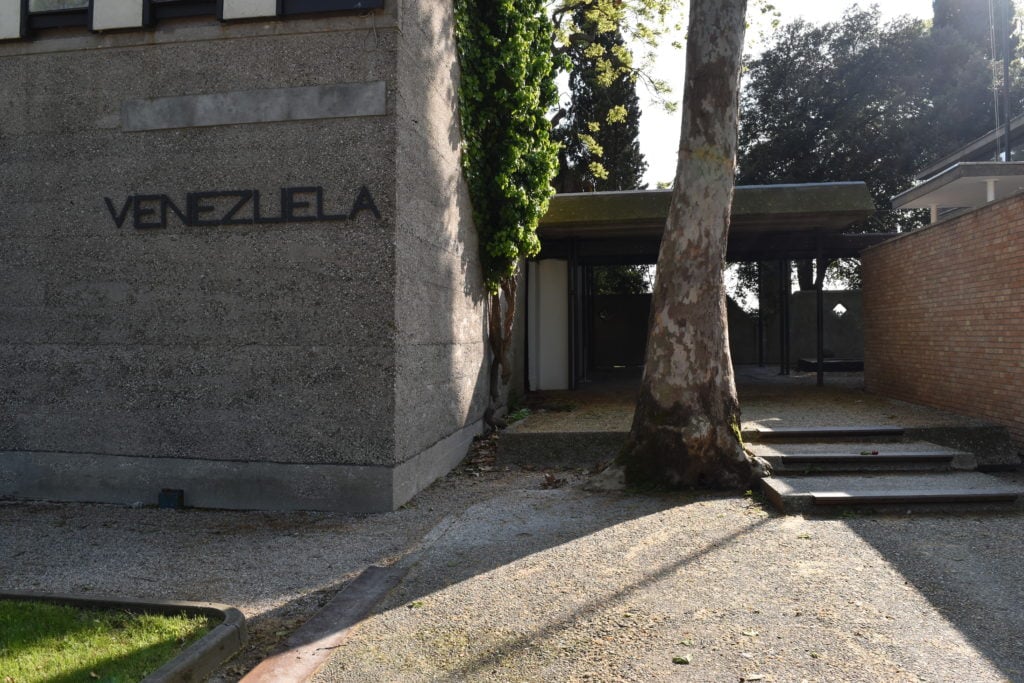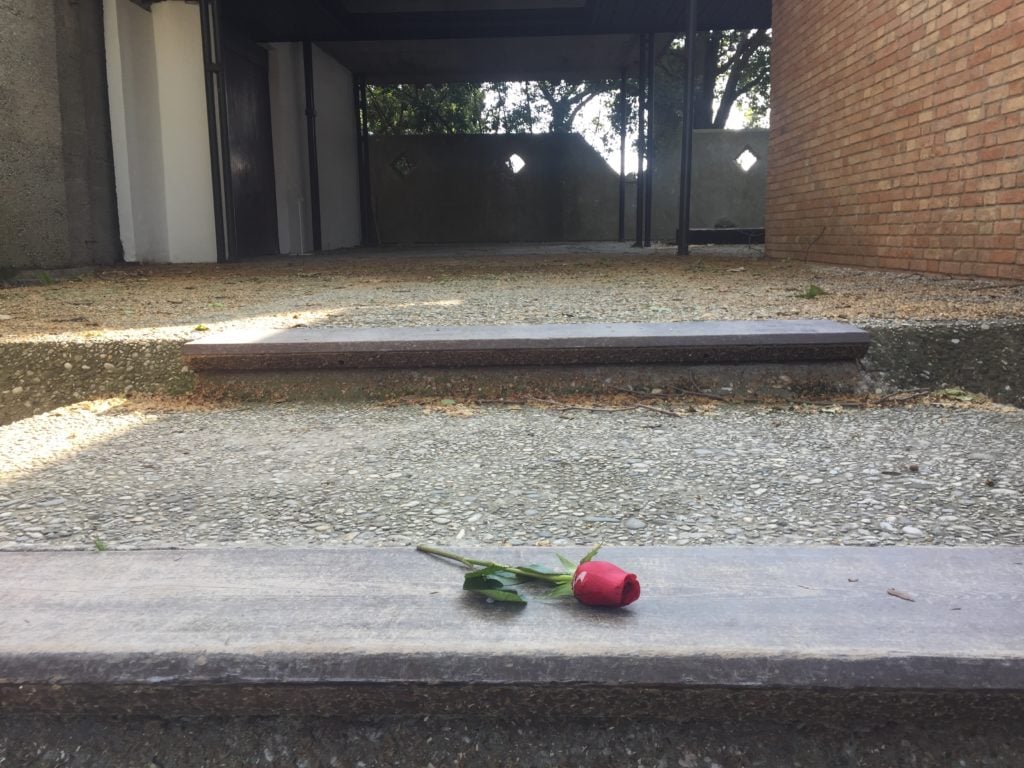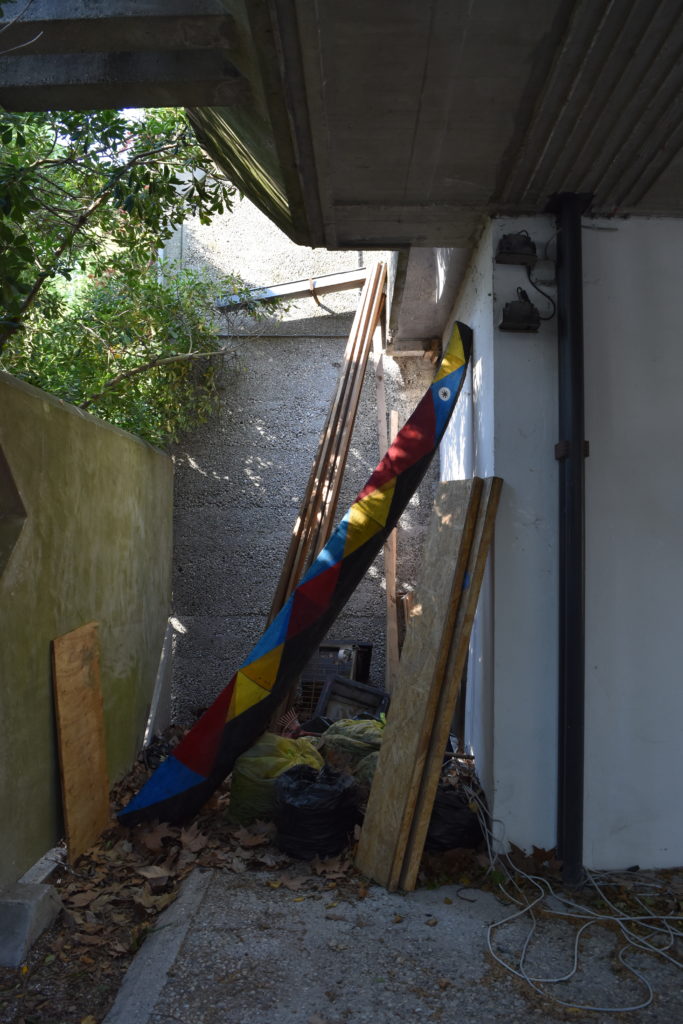Politics
Enduring a Political Crisis at Home, Venezuela Postpones the Opening of Its Pavilion at the Venice Biennale
Organizers say it'll open next week, but the building remains empty and padlocked, with trash bags piled up outside.

Organizers say it'll open next week, but the building remains empty and padlocked, with trash bags piled up outside.

Julia Halperin

Visitors streamed into the Giardini this morning to catch a first glimpse of this year’s Venice Biennale, which officially opened its doors for previews today. But amid all the bustle, iPhone photo-taking, and air kissing, one pavilion was left entirely abandoned. Venezuela, which has been mired in an acute political and humanitarian crisis for months, abruptly postponed the opening of its pavilion in the high-profile international art exhibition.
At a press conference this morning, Paolo Baratta, the president of the Venice Biennale, said the pavilion was now scheduled to open on May 13, five days later than expected. But there is no indication that installation is currently underway. The door to the pavilion is padlocked shut and the courtyard is blanketed with leaves; trash bags are clustered in an alley next door.
On Tuesday afternoon, the only sign of life was a single red rose left on a ledge in front of the concrete building. It disappeared a few hours later.
The formerly oil-rich nation’s economy has been in a downward spiral for years, but the situation has become grave in recent months. Two politicians—Nicolás Maduro, who was sworn in for a second term as president in January following an election widely deemed fraudulent, and the little-known opposition leader Juan Guaidó—both claim to be the rightful leader of Venezuela.

In front of the Venezuela Pavilion. Photo: Ben Davis.
While Maduro retains the support of the military and successfully quashed a violent uprising last week, Guaidó has been recognized by governments including the US and Canada. As this power struggle continues, Venezuelans suffer: the country’s public health care system has collapsed and prolonged electricity outages are common.
This year’s Venezuela Pavilion—organized by curator Oscar Sotillo, the founder of the left-wing cultural journal La Mancha—is titled “Metaphor of three windows.” It is due to present work by artists Natalie Rocha Capiello, Ricardo García, Gabriel López, and Nelson Rangelosky. Neither Sotillo nor the participating artists responded to inquiries from artnet News about the status of the pavilion by publication time. A representative for the biennale said only that organizers were experiencing a delay with the set-up.

The scene next to the Venezuela Pavilion. Photo: Ben Davis.
Earlier this week, García unveiled an exhibition of large-scale drawings, “Las Demonicas,” at the Museum of Fine Arts in Caracas. He took a photo with Sotillo, the pavilion’s curator, at the show and told local press he was planning to leave soon for Venice.
Venezuela enjoyed healthy public funding for the arts until the 1990s, when the country’s economy foundered and inflation soared. It opened its concrete, Carlo Scarpa-designed pavilion in the Giardini—also home to the US, UK, French, and German pavilions, among others—in 1956.
Despite radio silence from organizers and few signs of activity at the pavilion, Venezuela’s art community has a reputation for persistence. “In a country where there is no paper, we are still printing catalogues,” writer Raquel Abend told artnet News in March. “In a country where we can’t find medicine, we are still organizing exhibitions.”